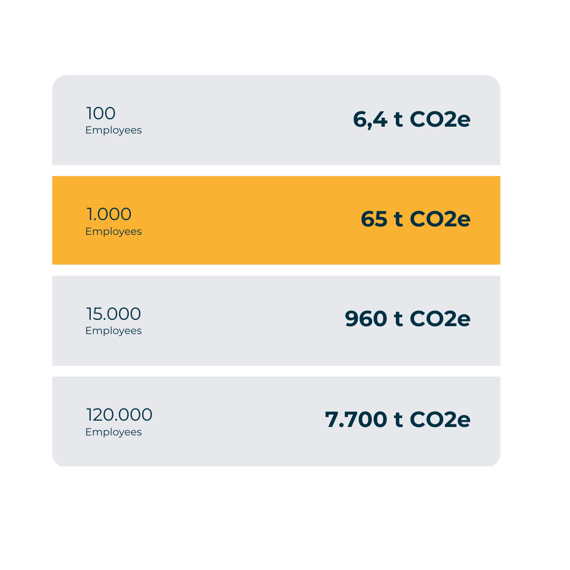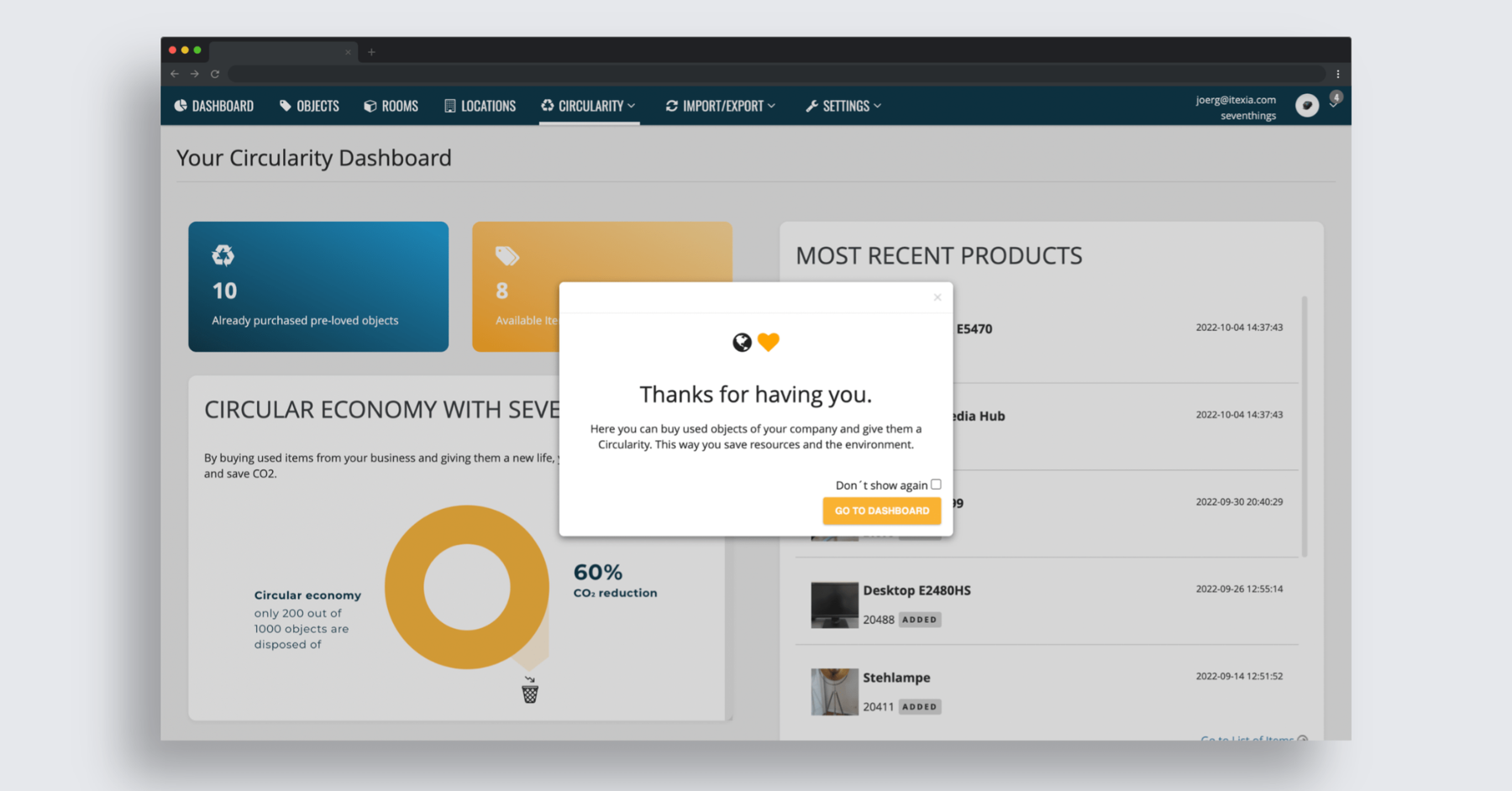80 % of companies scrap their old company inventory when it is written off - even though most are aware that this process is neither efficient nor sustainable. Too much time, not enough staff and high costs for a more sustainable process, according to a study by seventhings. Yet sustainable end-of-life management can be so simple.
In this article you will learn:
- How does circular inventory management help?
- What is the seventhings Circularity Hub?
- What are the advantages for me and my company?
Circular inventory management
Inventory management is no longer the old-fashioned Excel spreadsheet that interns use to walk around the company once a year and take inventory. Digital tools can help you keep track of your entire inventory and know who is using what and when. But often the life of inventory is linear - it is bought, used and scrapped. Circular inventory management puts an end to that.
Circular inventory management is a concept that follows the life cycle of products and materials from manufacture to the end of their useful life. The aim is to use resources more efficiently, minimise waste and close economic cycles by returning surplus or unused products to the economic cycle. This form of circular economy not only increases the efficiency of the business, but also contributes to a cleaner and more sustainable environment.
The Westly Group has also recognised this and identified the circular economy as a key megatrend in its analysis. It even specifically addresses circular inventory management and the importance of digital platforms for efficient resource management.
The seventhings Circularity Hub
The Circularity Hub is a unique software solution that enables companies to make their inventory management circular. The software tracks the lifecycle of products from manufacture to end-of-life and helps companies return surplus or unused products back into the economic cycle. By optimising inventory management, companies can not only increase their resource efficiency, but also improve their ESG compliance.
The circular economy is an important part of the global effort to create a sustainable future. It ensures that resources are used for a longer time and waste is minimised. This means less pollution and more efficient use of resources.
How does the Circularity Hub work?
The Circularity Hub actively helps you to stop throwing away inventory and put it back into circulation with just a few clicks. This allows you to dispose of inventory that is no longer needed by:
- Sharing with employees, internally with other departments and externally with third parties
- Sale to refurbisher (incl. CO2 certificate and data deletion)
- Donate locally to clubs, schools and other businesses
What are the benefits for businesses?
By using the Circularity Hub, companies can contribute to a better environment while improving business results, saving an average of 56.000€ per year for a company with 1.000 employees.

With the seventhings Inventory Manager you can make your items transparent and save resources through efficient management. With the Circularity Hub, you can take a big step towards a circular economy and actively save CO₂ by keeping products in use for a longer time, reducing the need to manufacture new products.
As a company with 10.000 employees, you save almost 1.000 tonnes of CO₂ every year. That's equivalent to planting 76.800 trees every year to offset this.

Find out how the Circularity Hub works in detail in our knowledge base.
By promoting the circular economy and using the Circularity Hub, your company can not only improve its ESG compliance, but also strengthen its competitiveness. This is a win-win situation for businesses and the environment.
We believe the Circularity Hub will play an important role in promoting a sustainable future and are excited to be part of this movement. To find out more about the circular economy and circular inventory management, download the whitepaper here.


